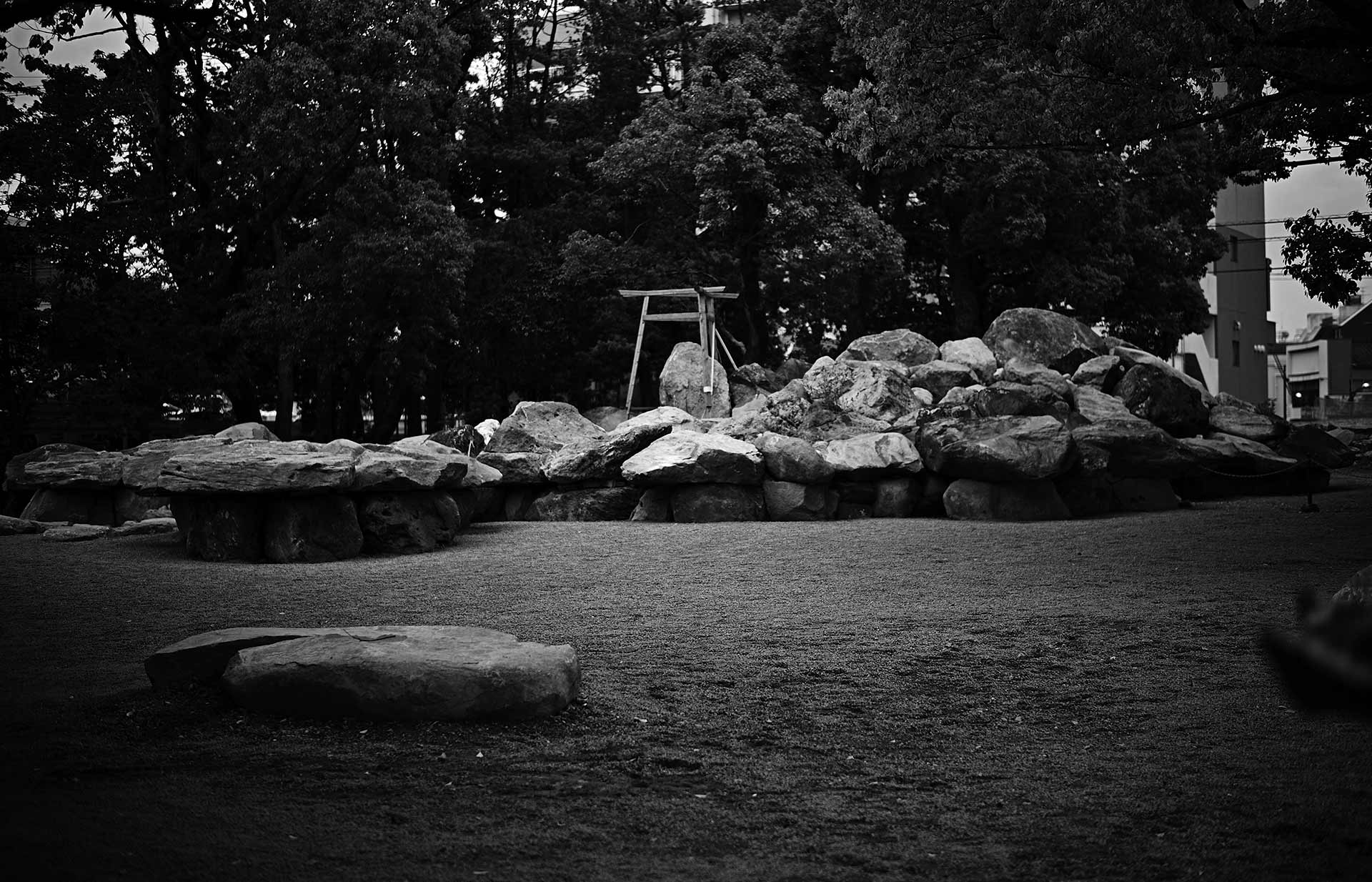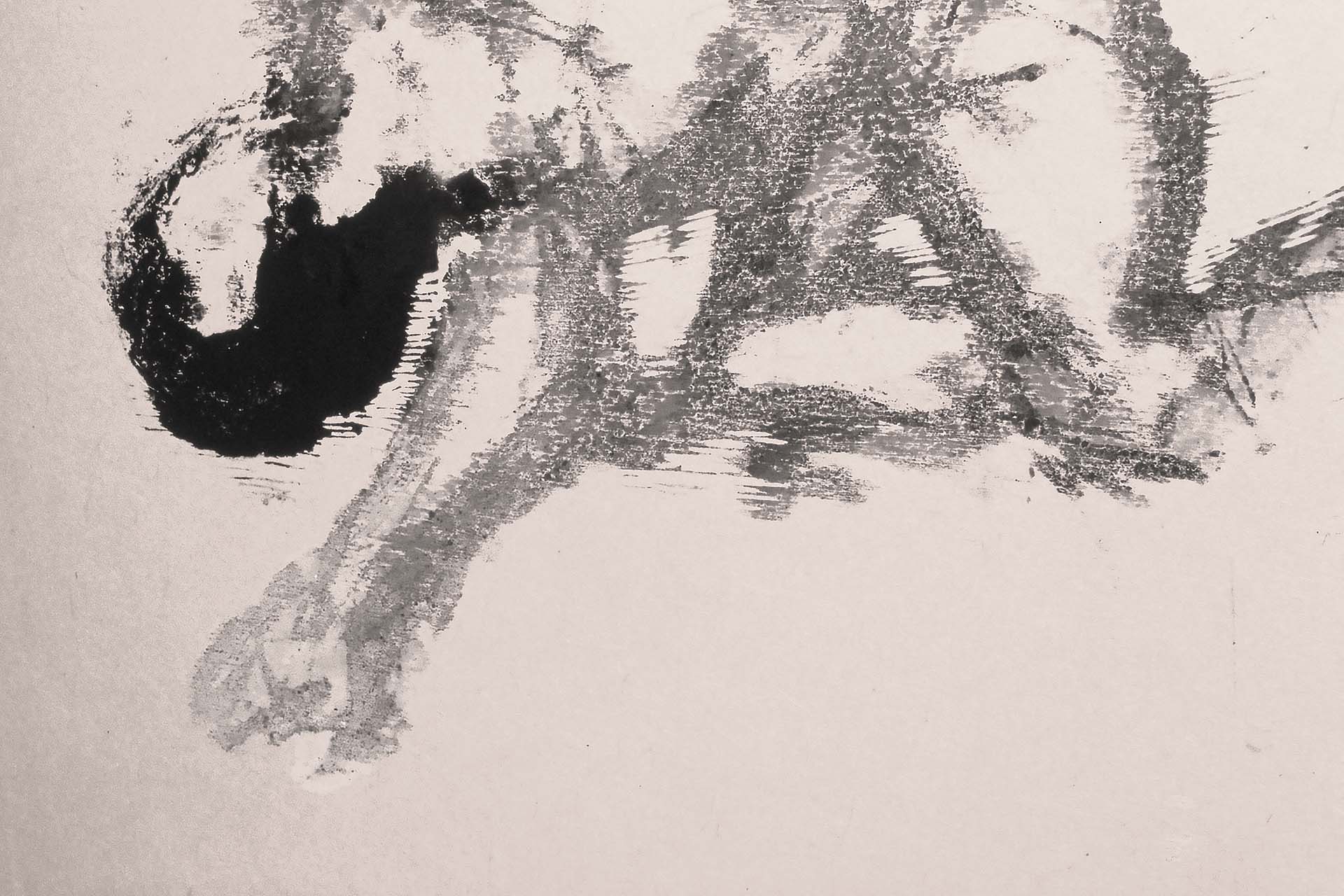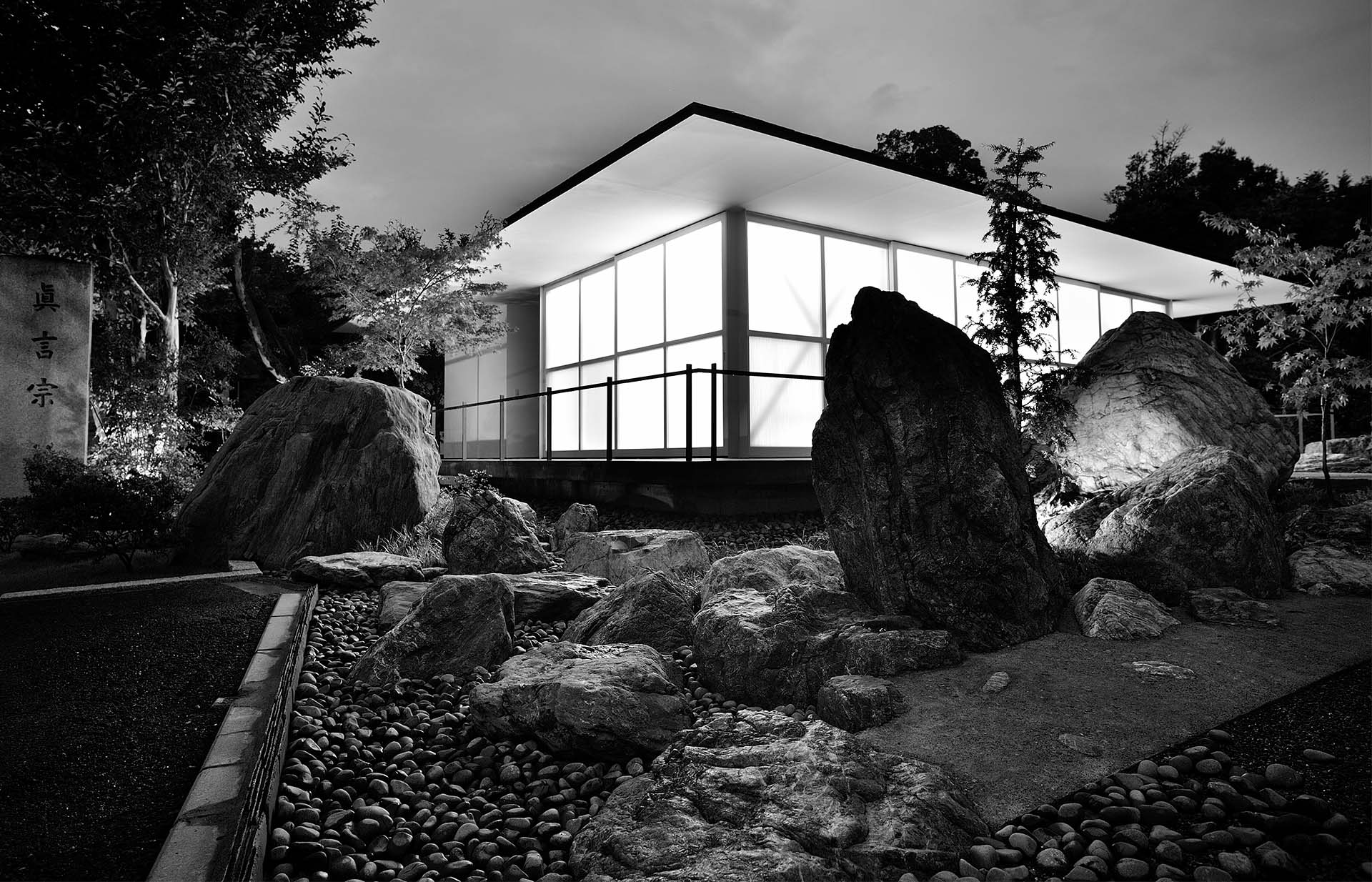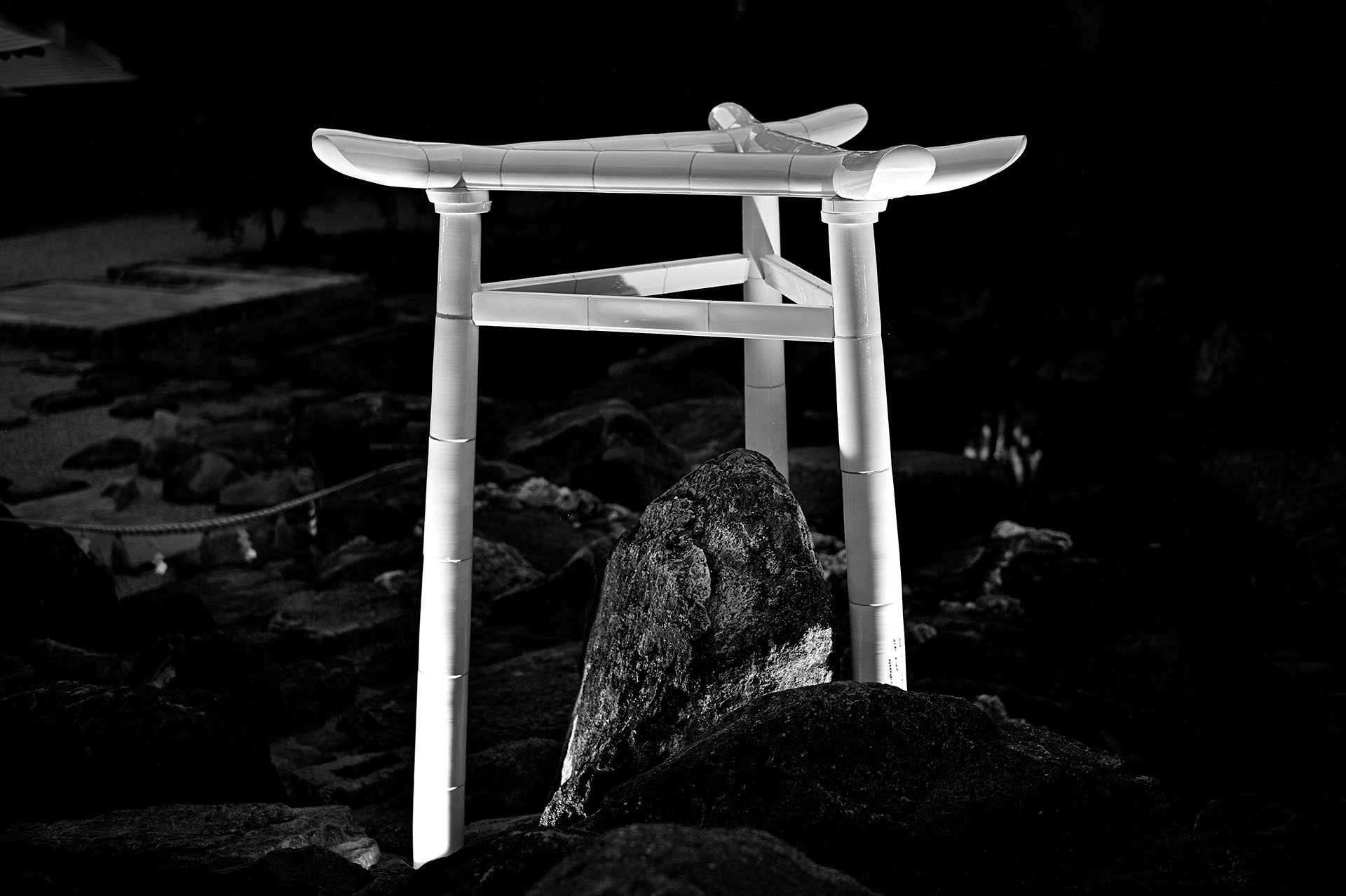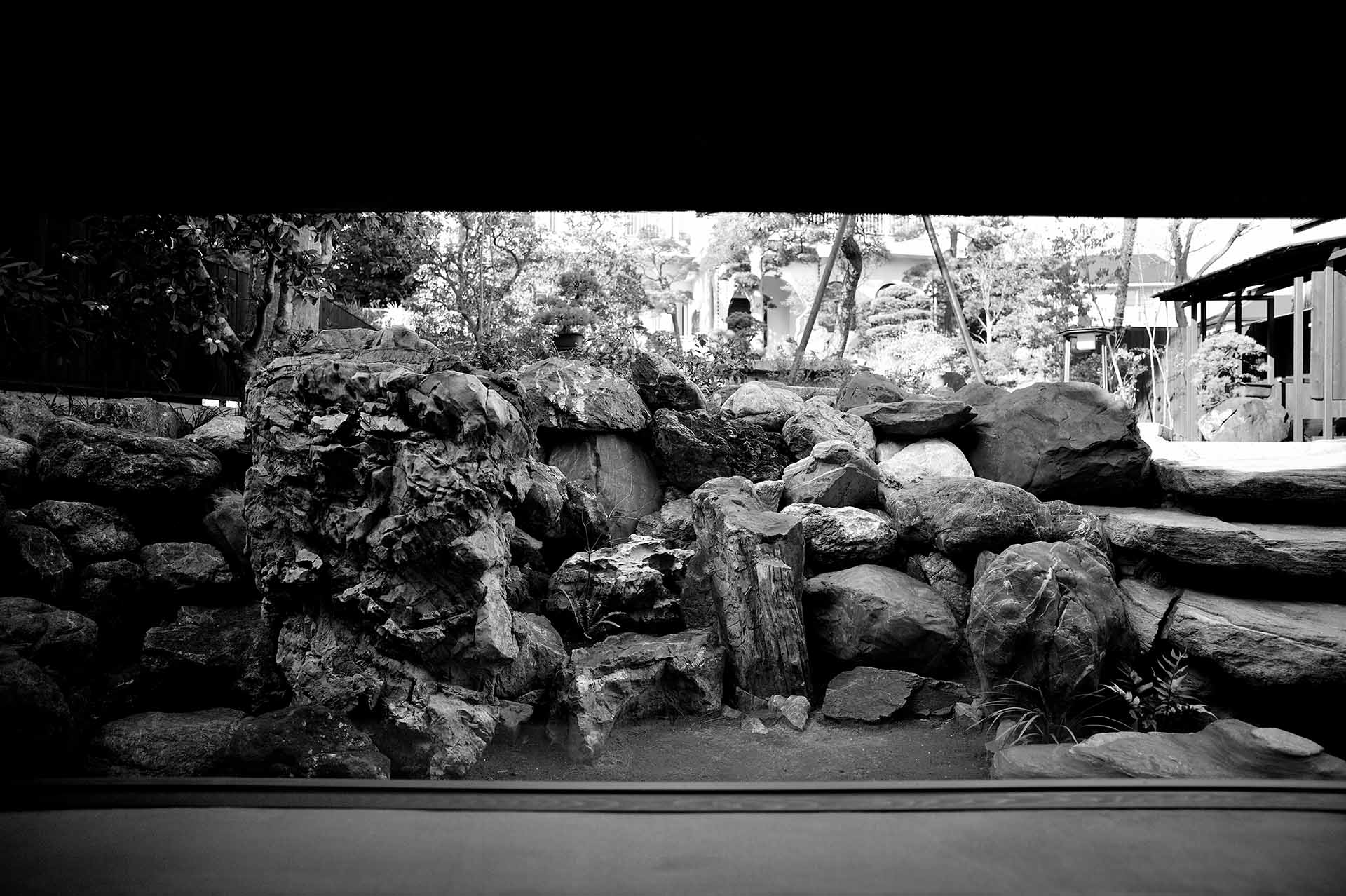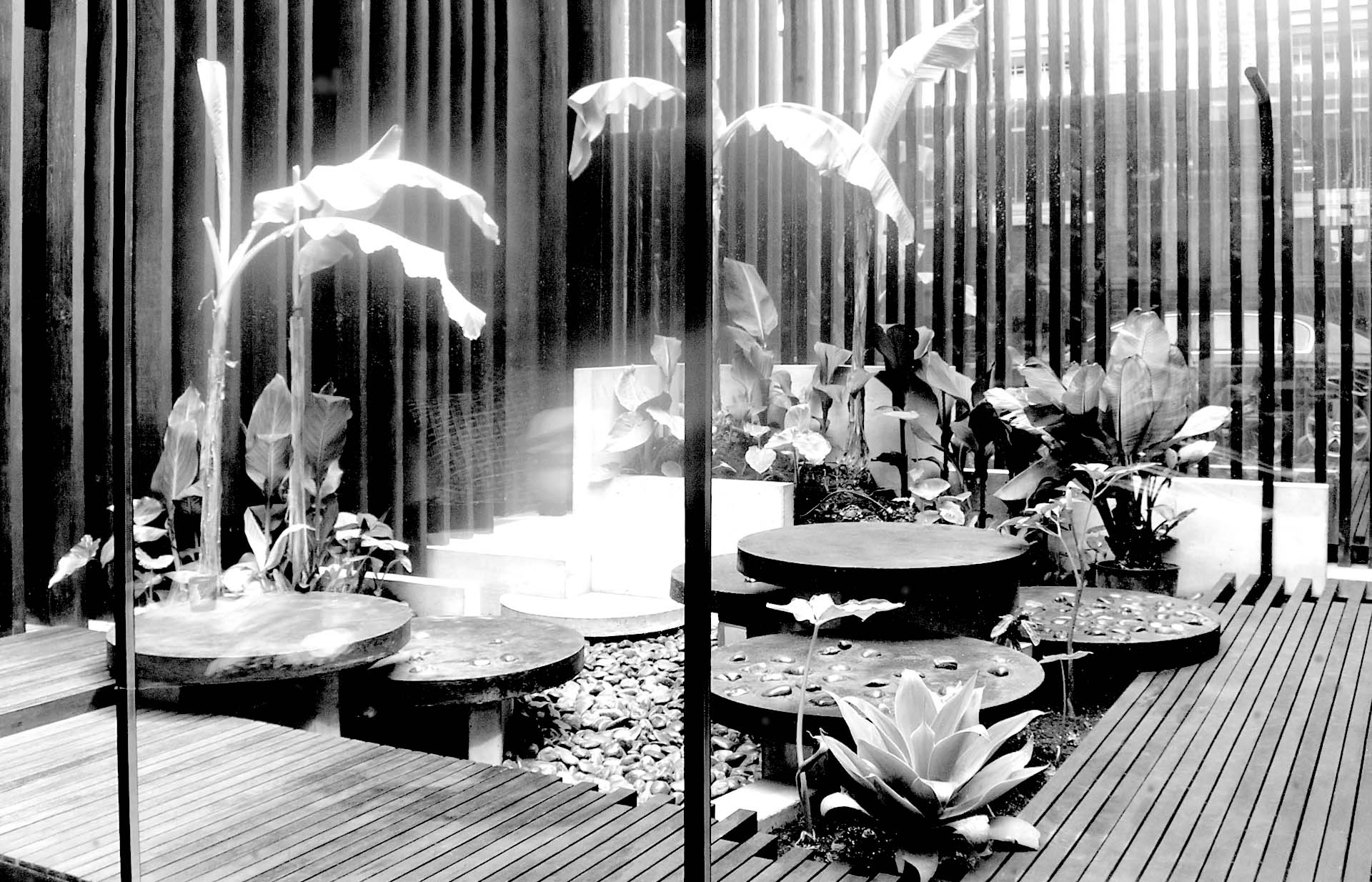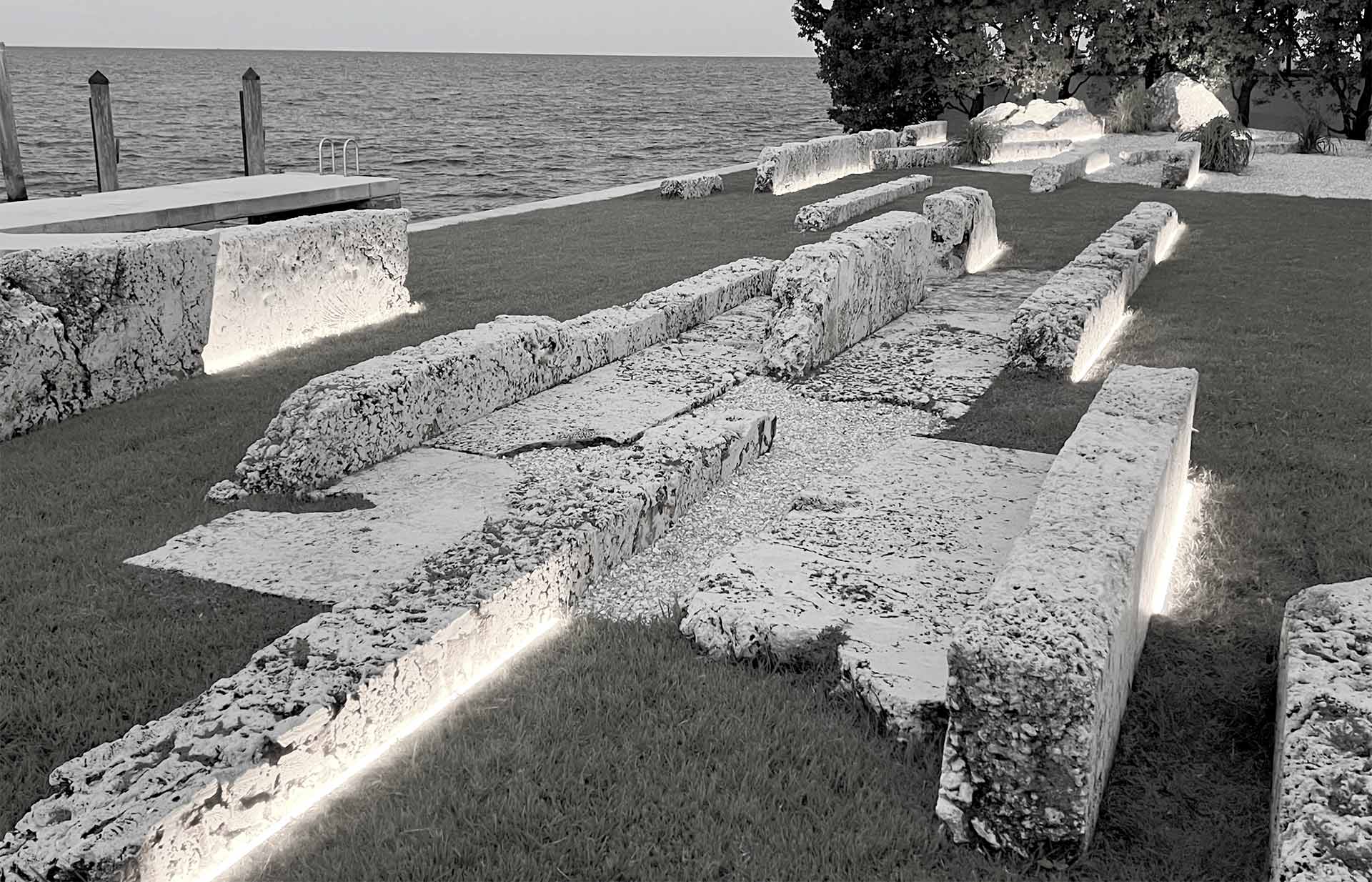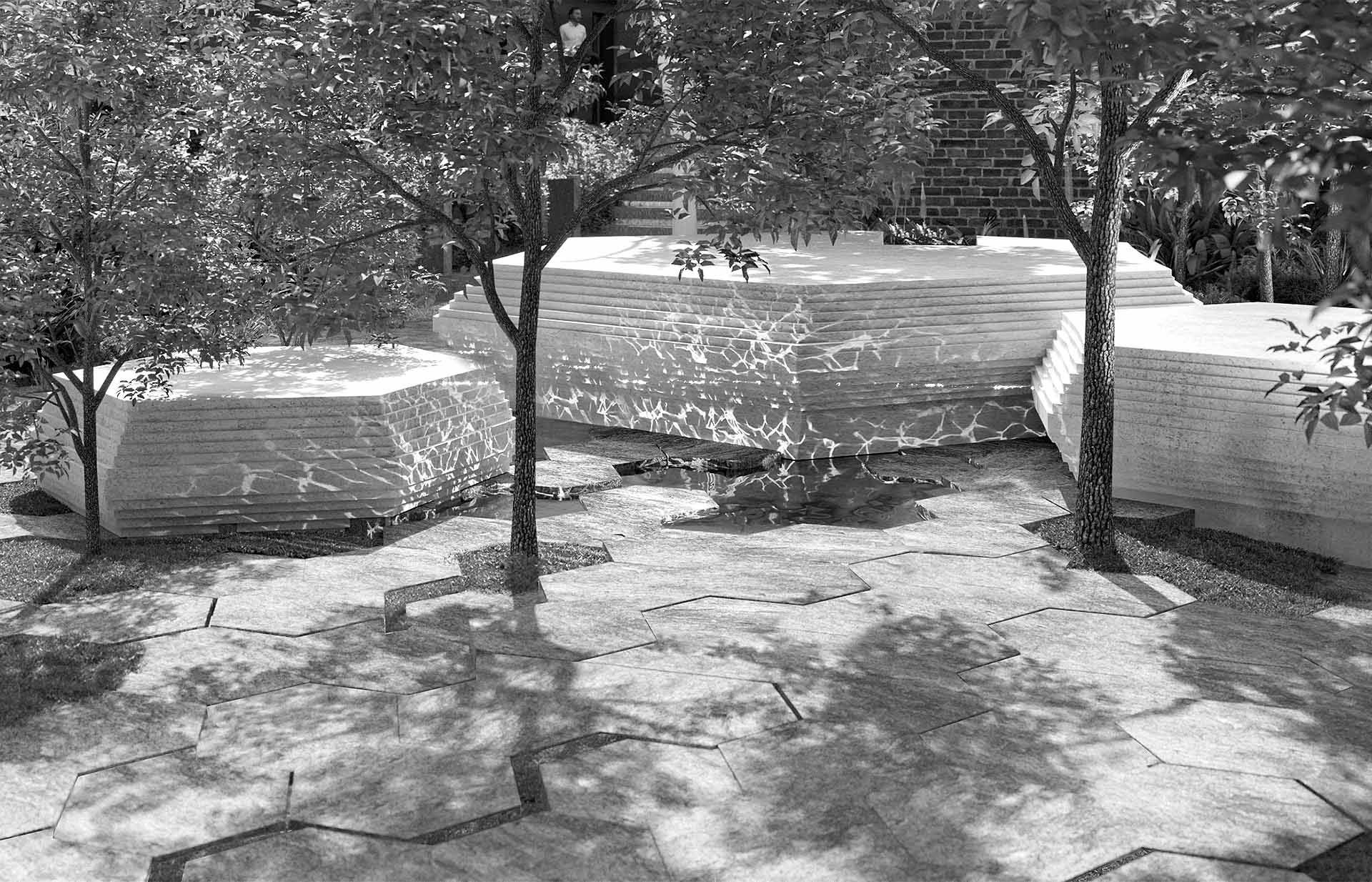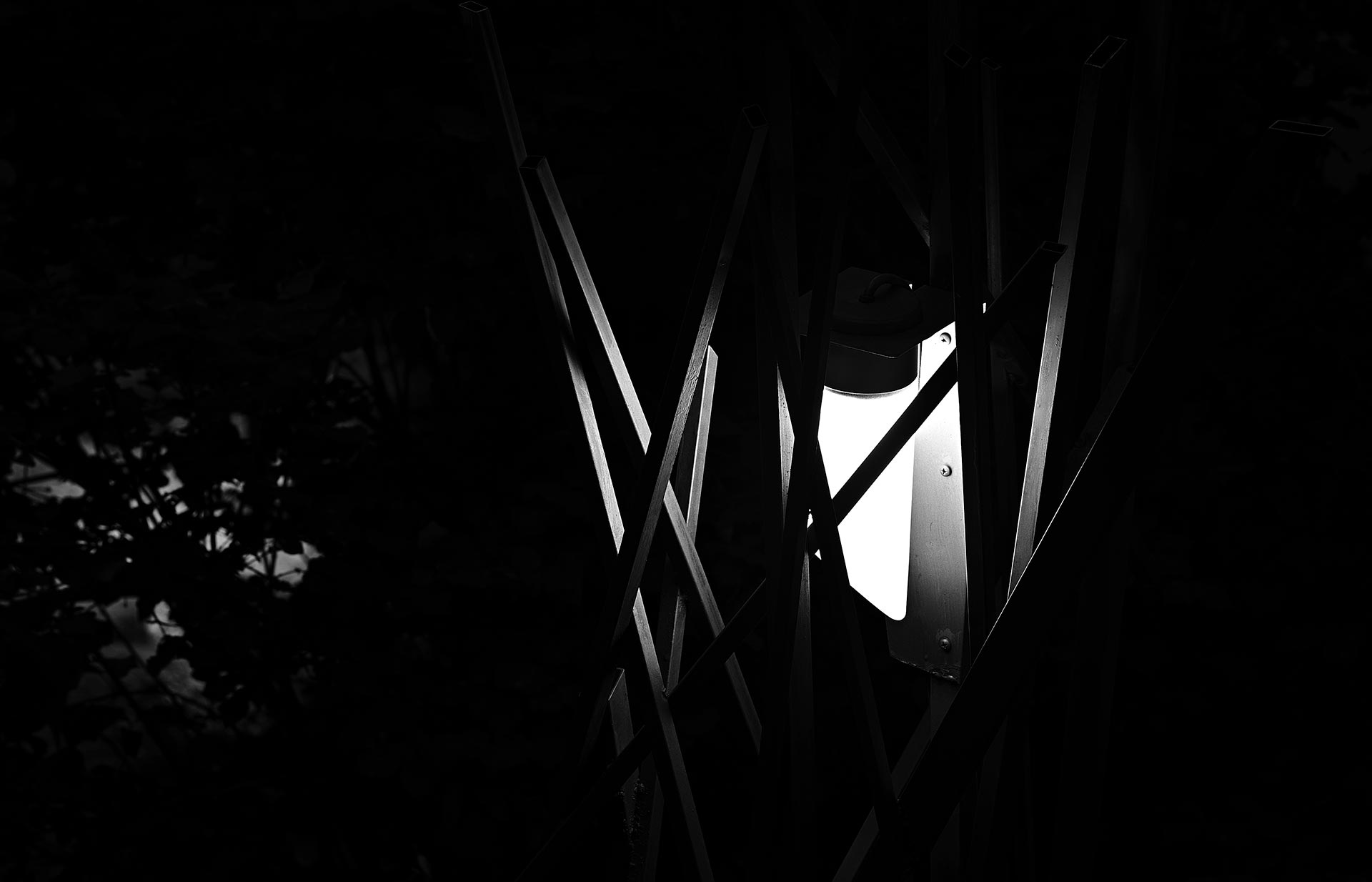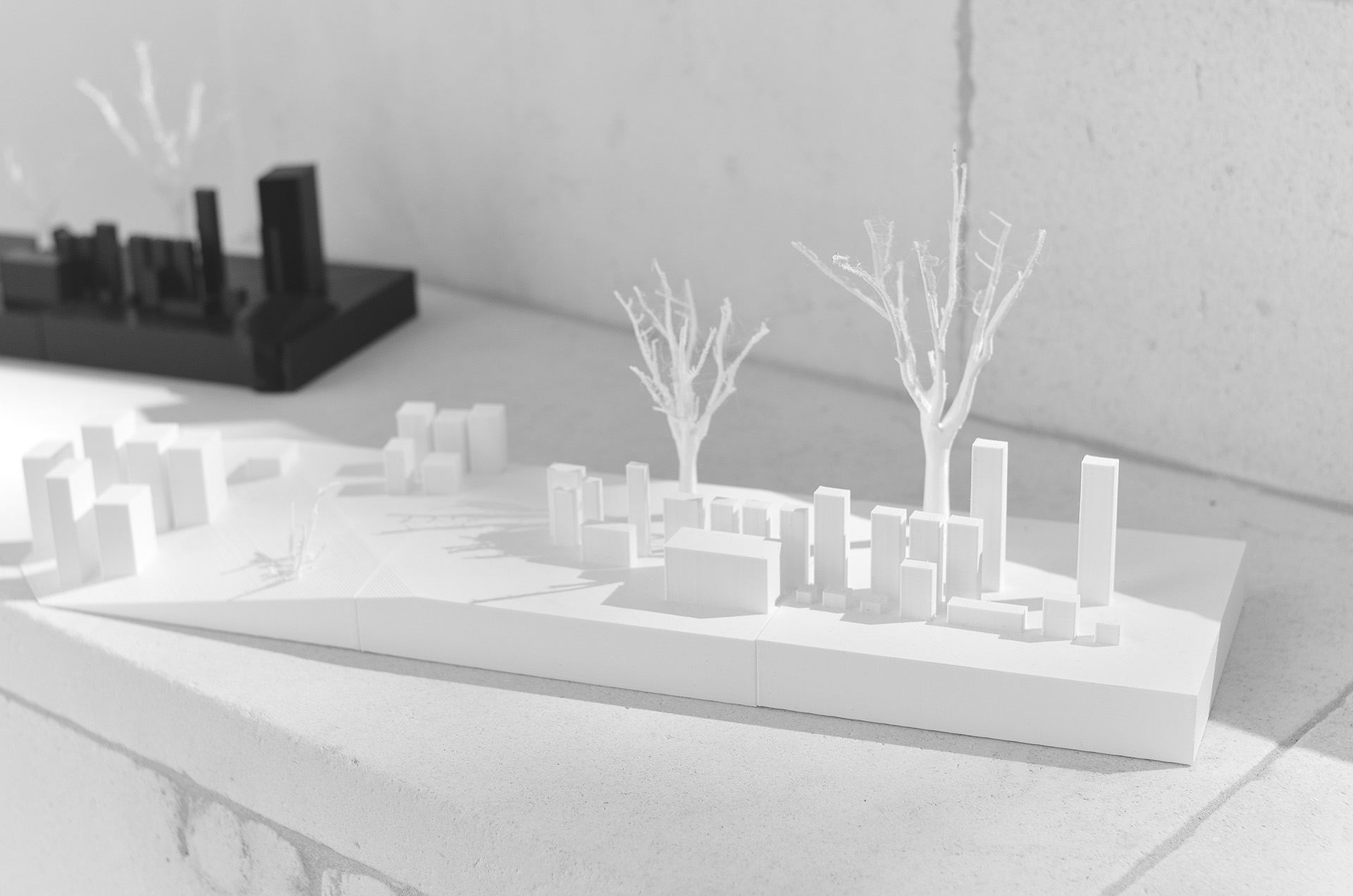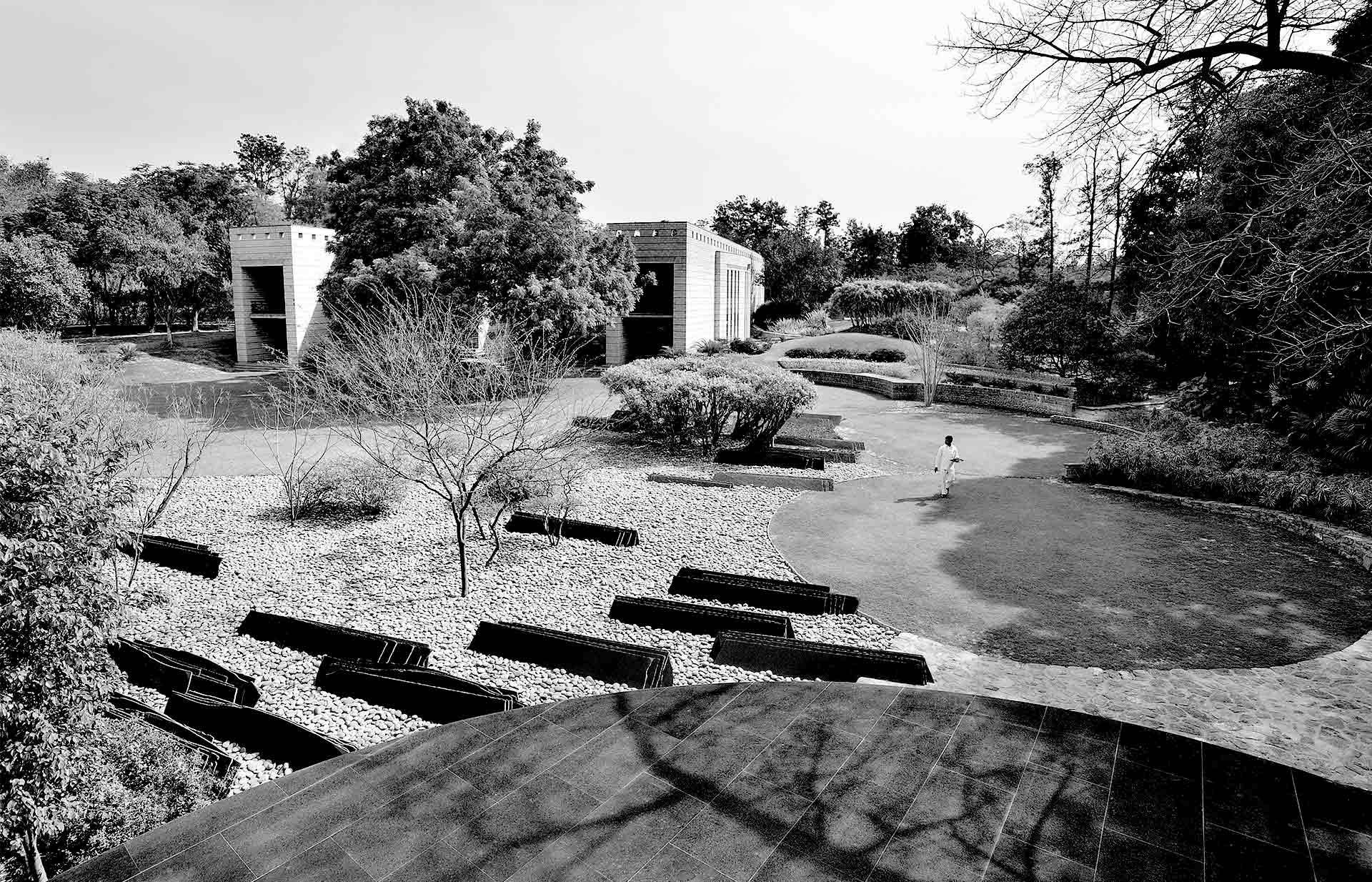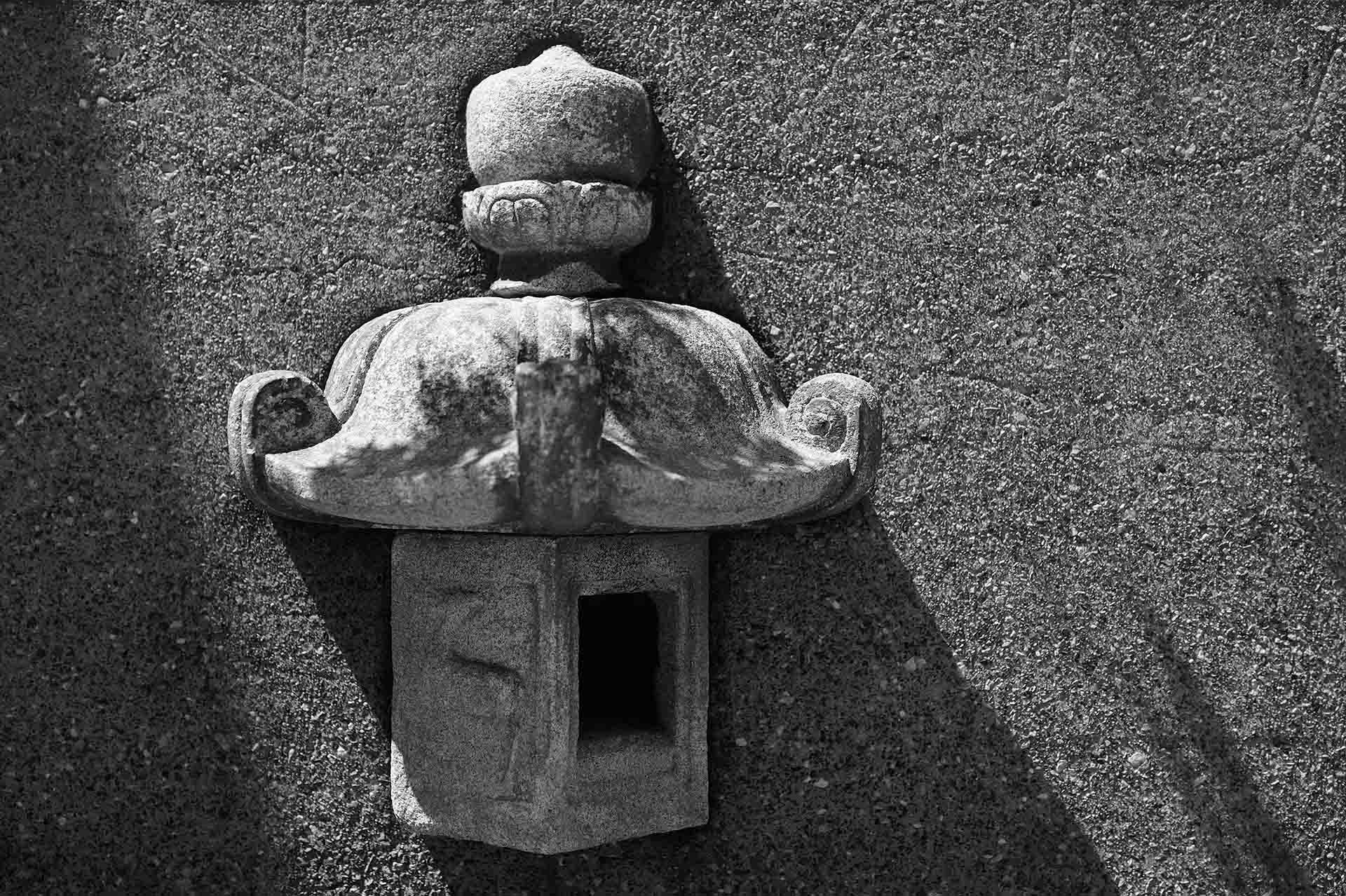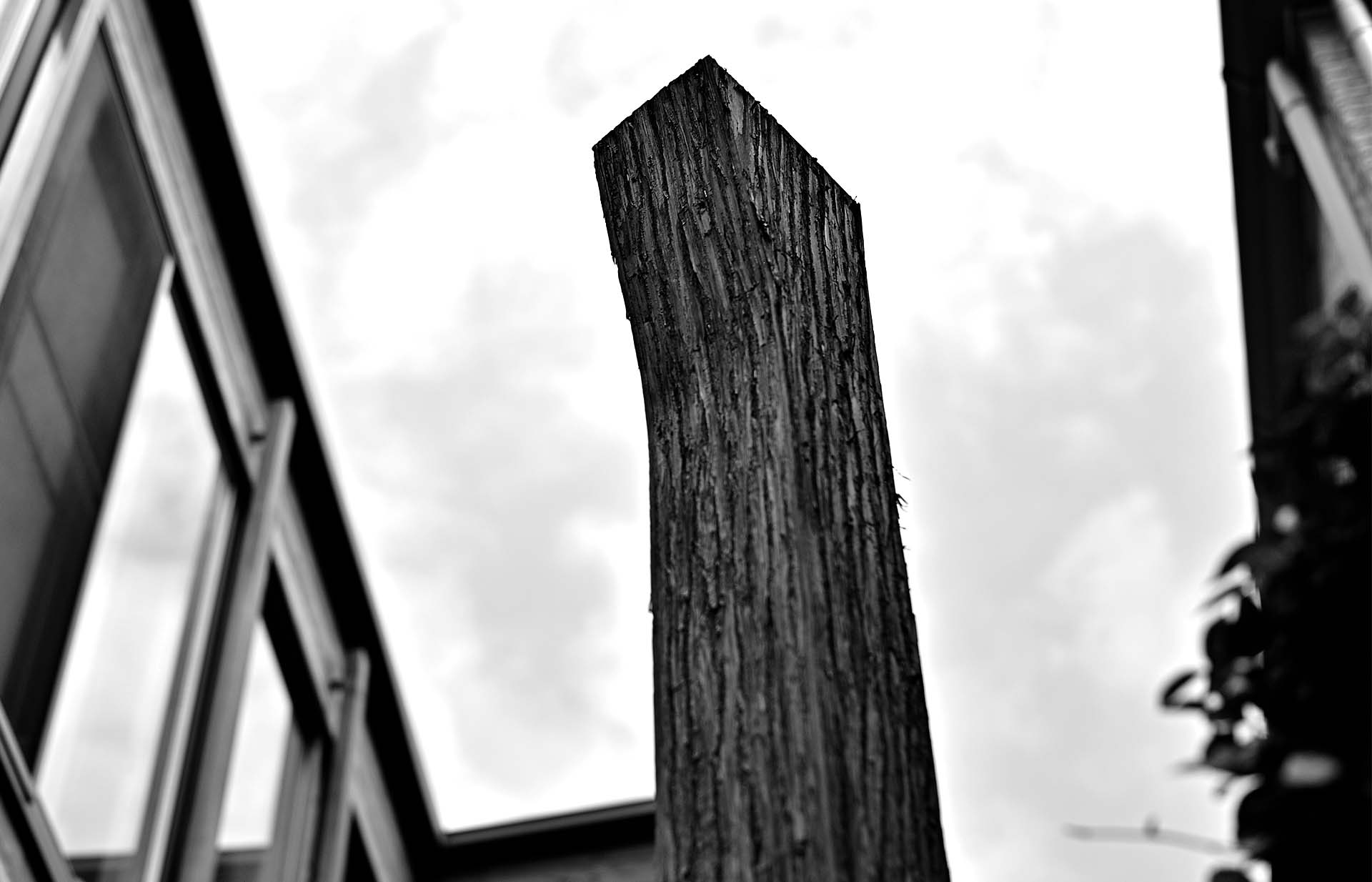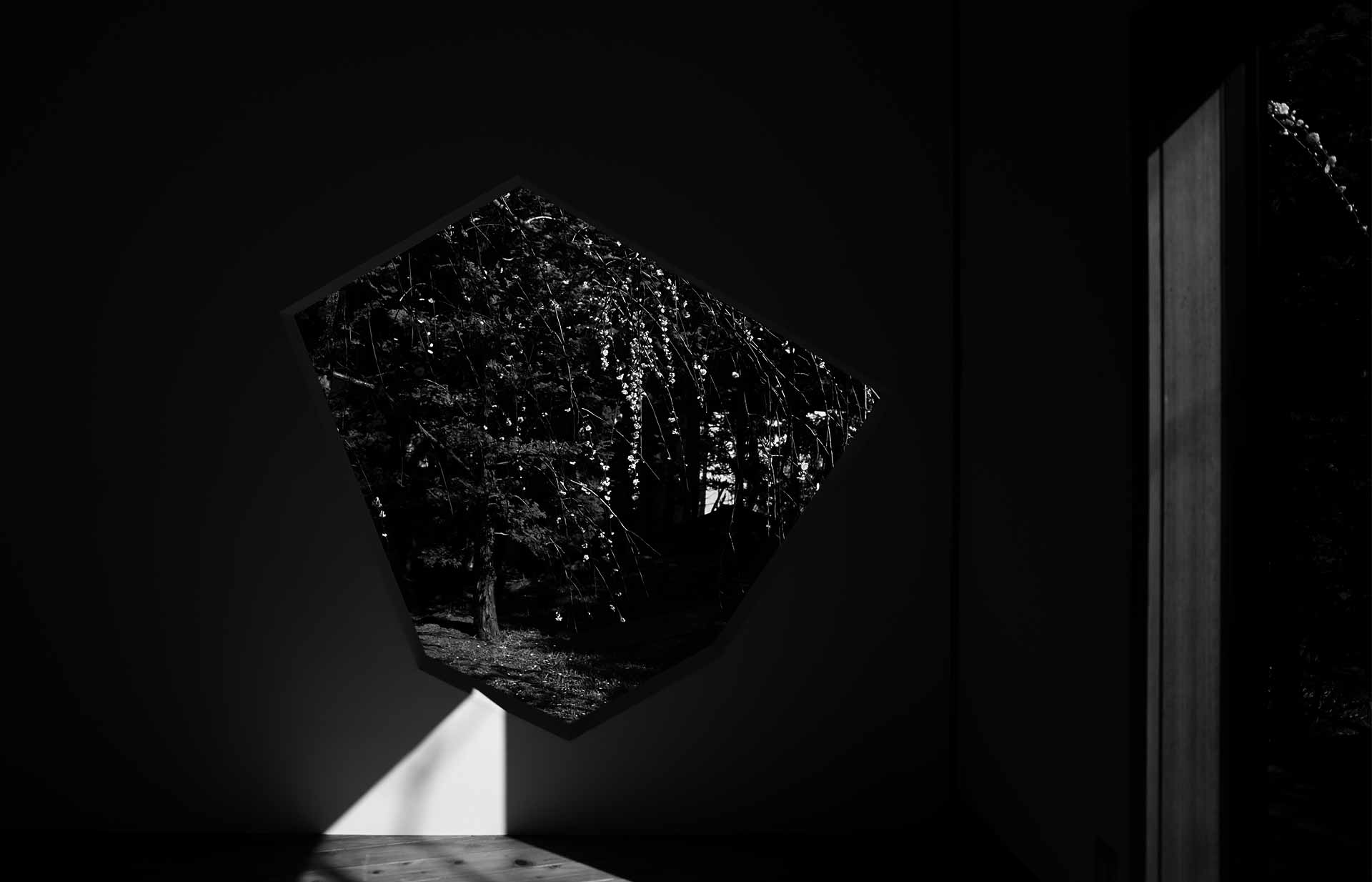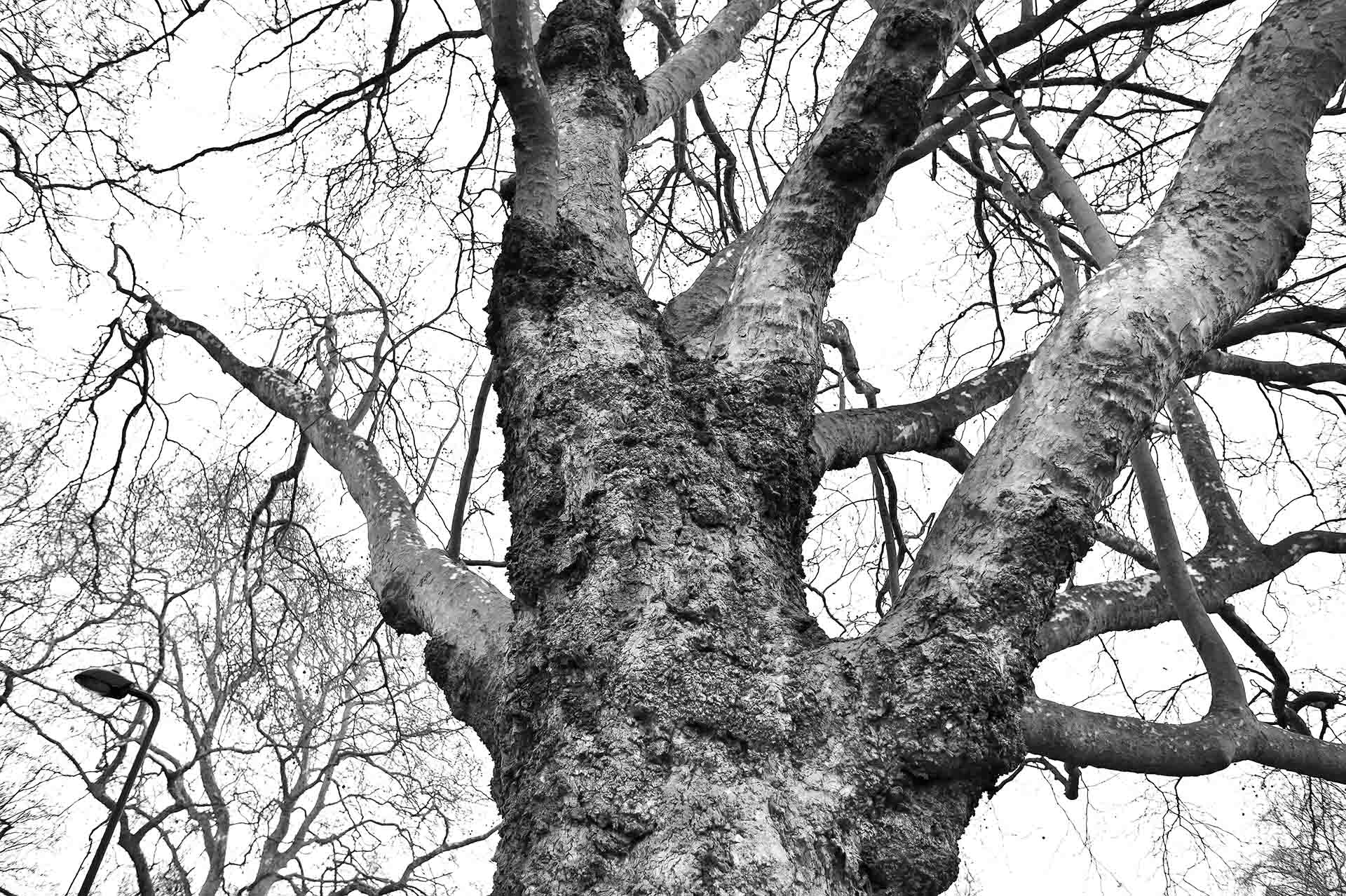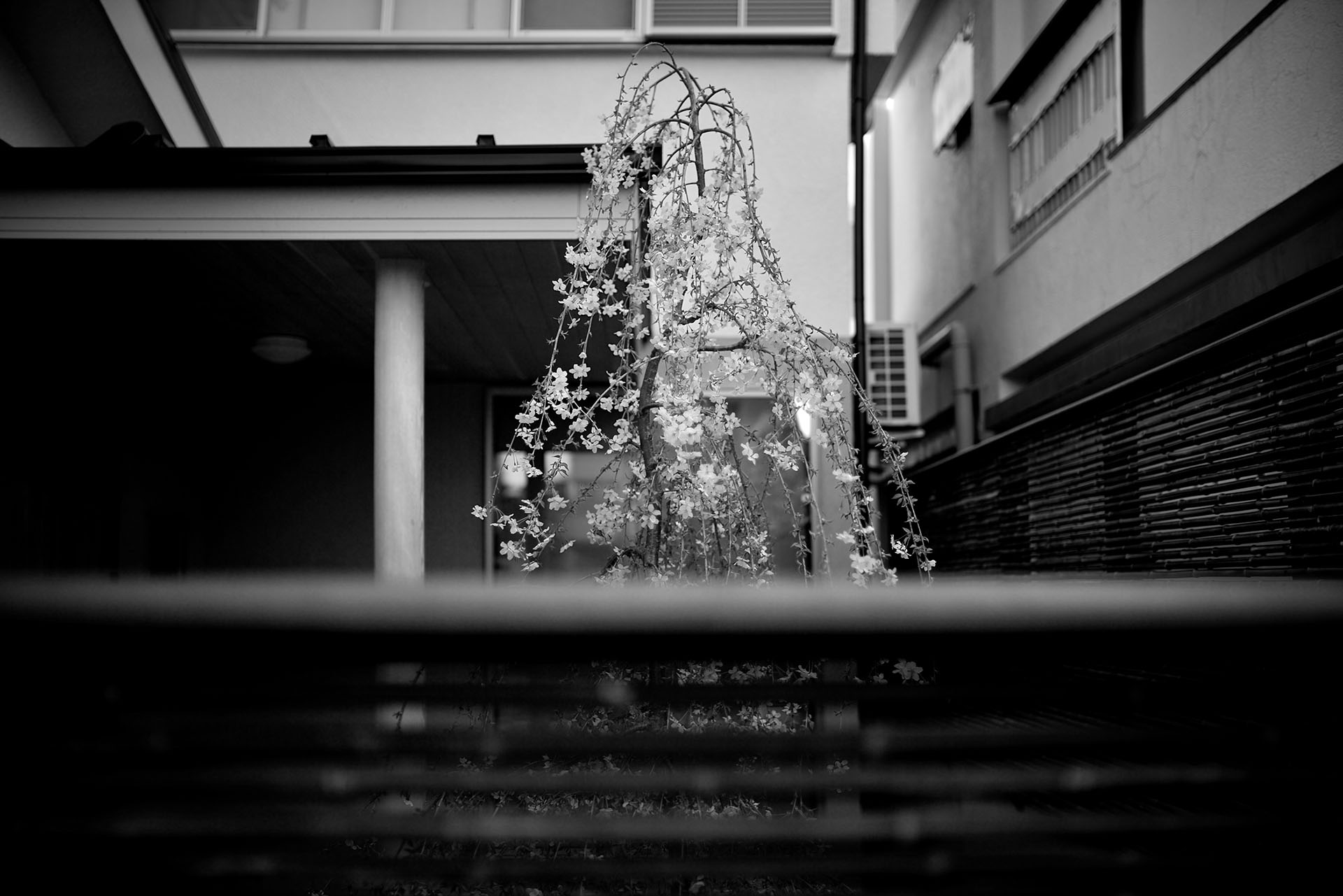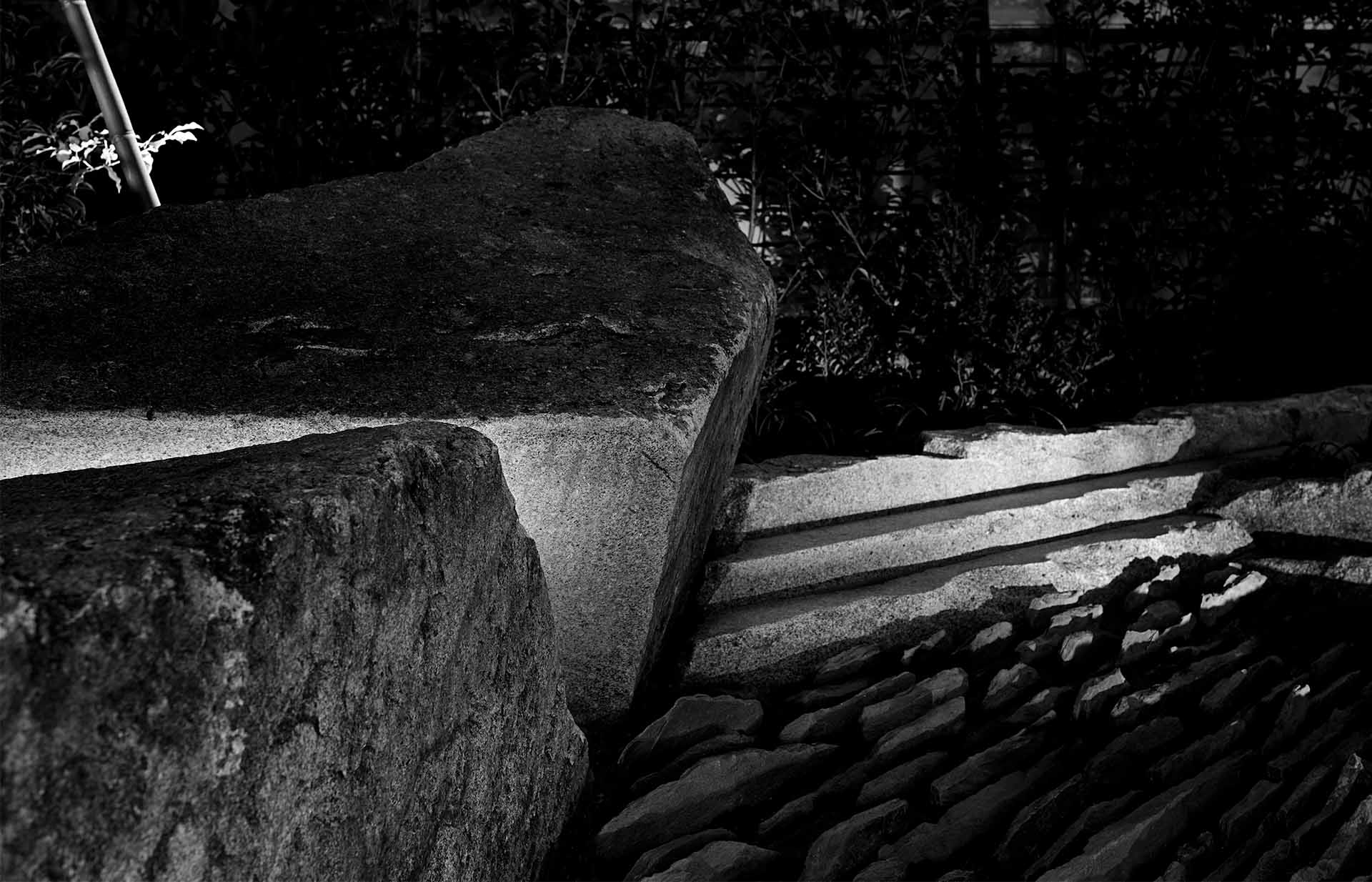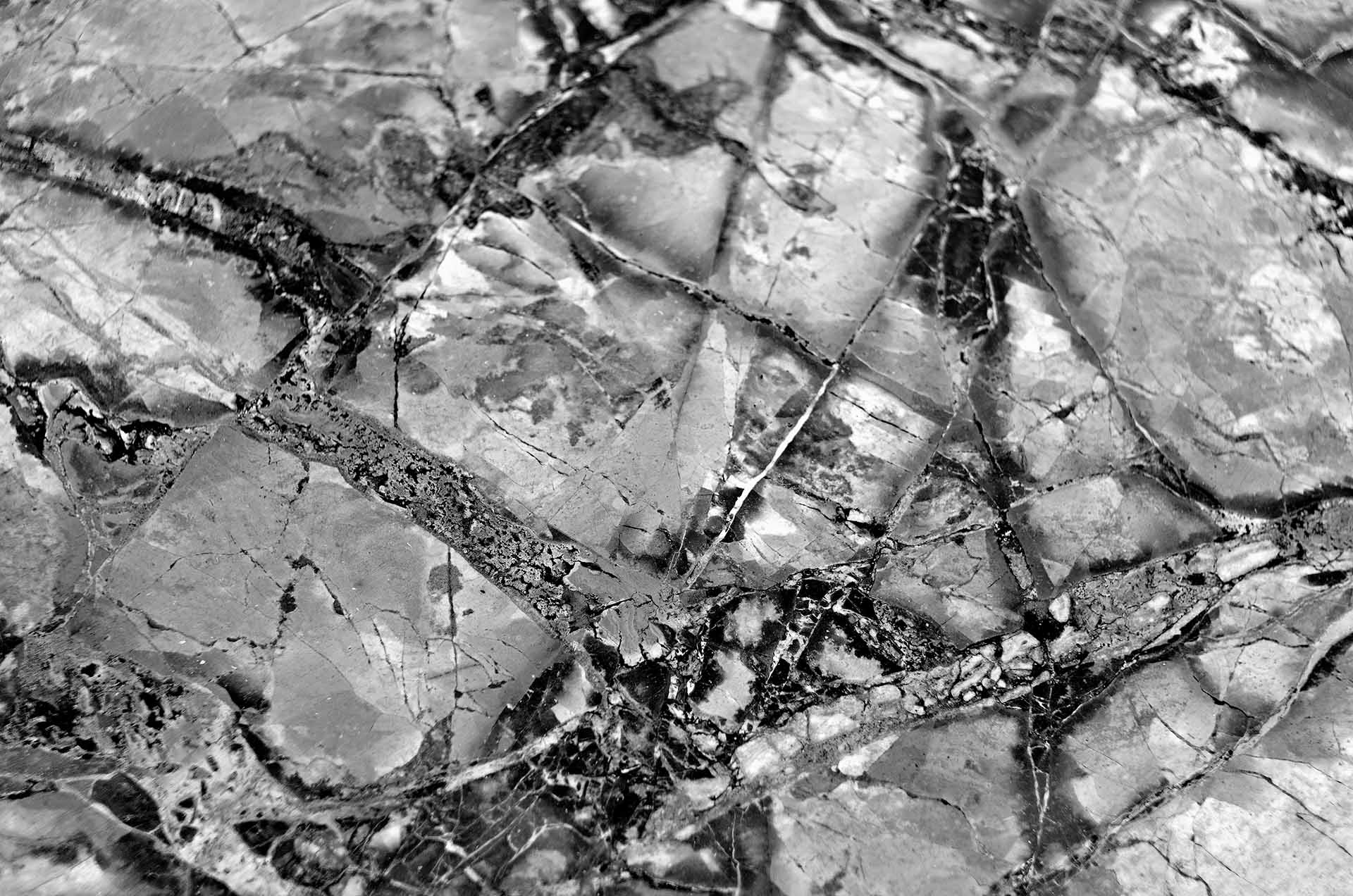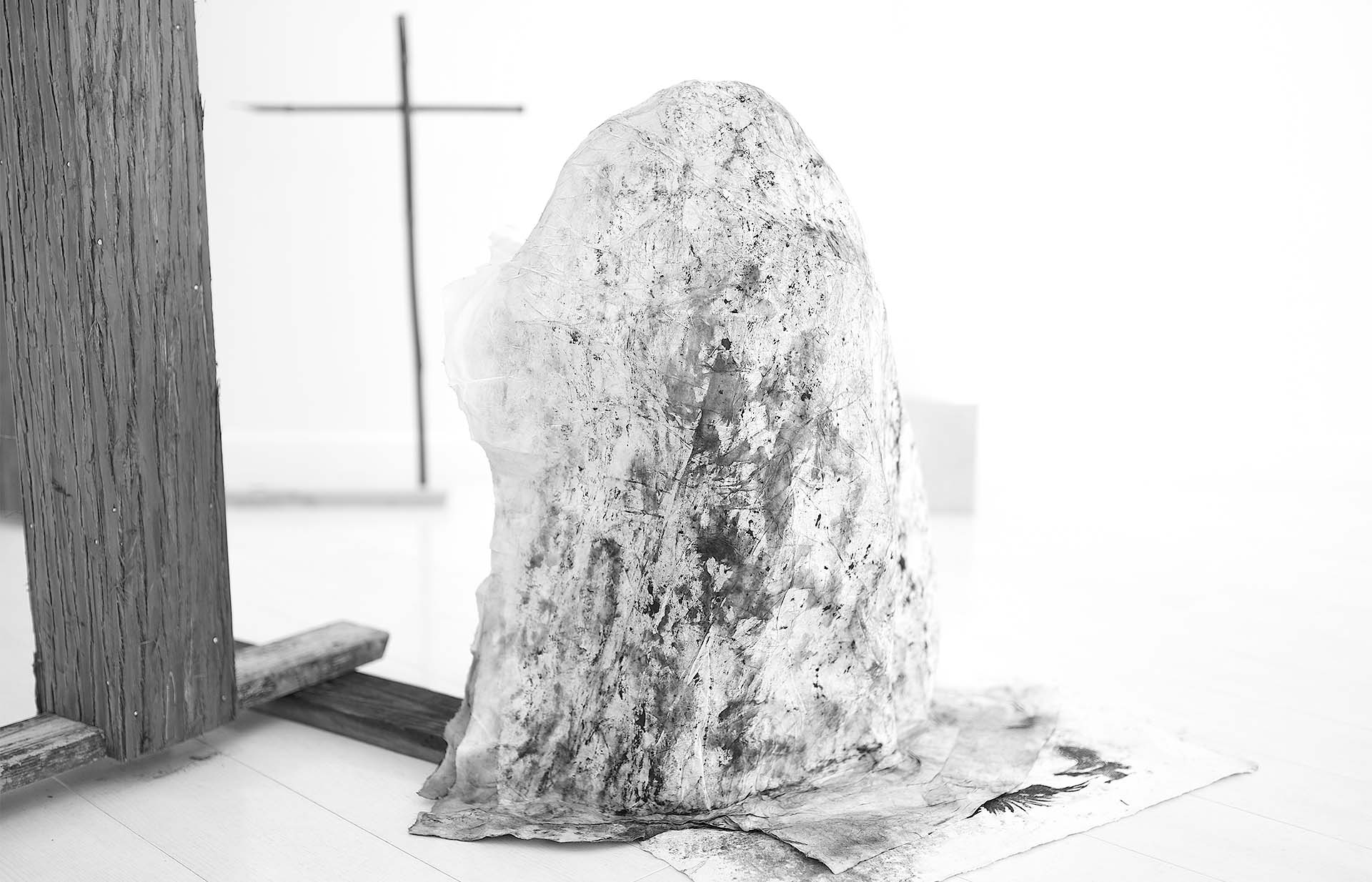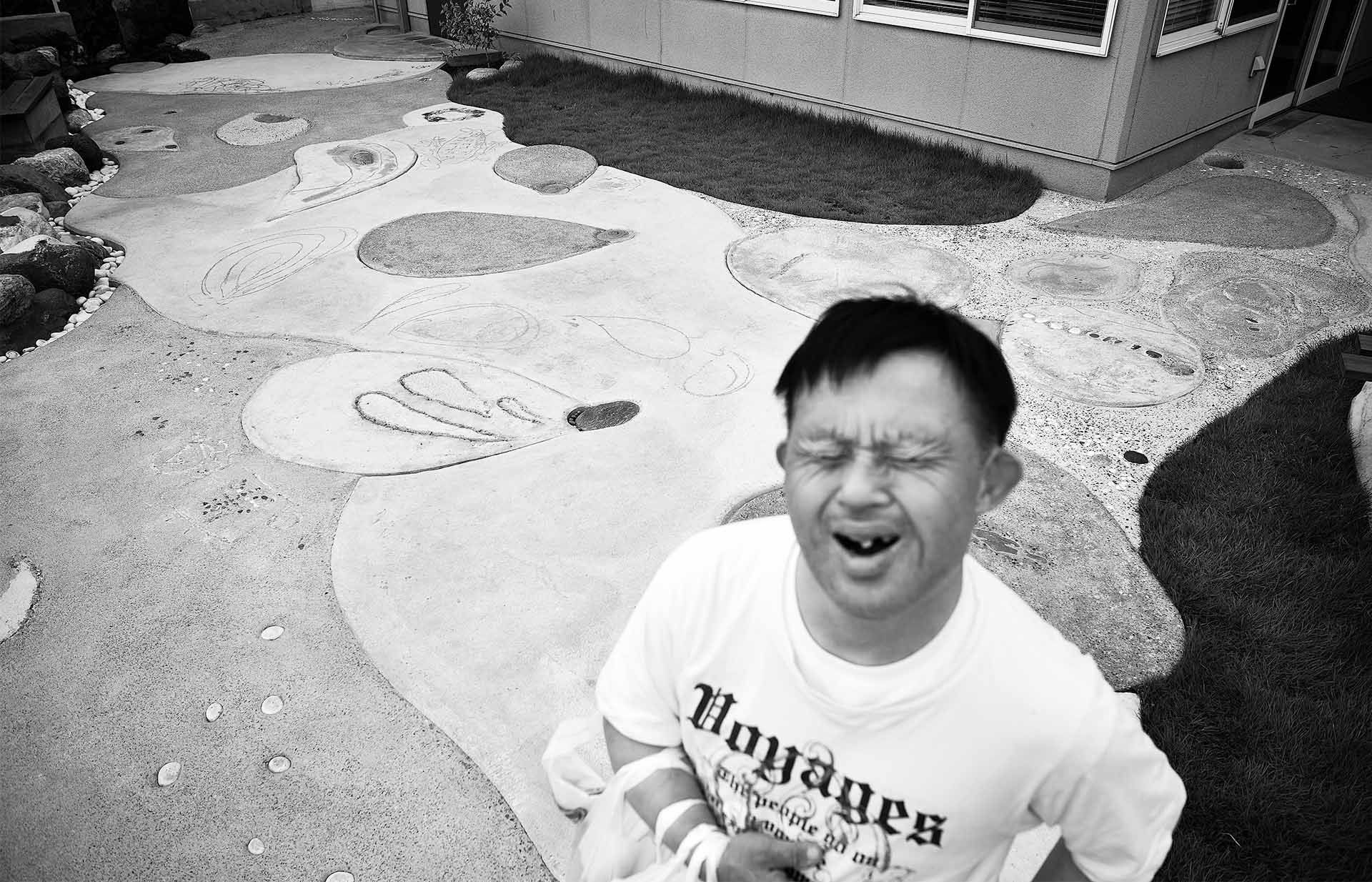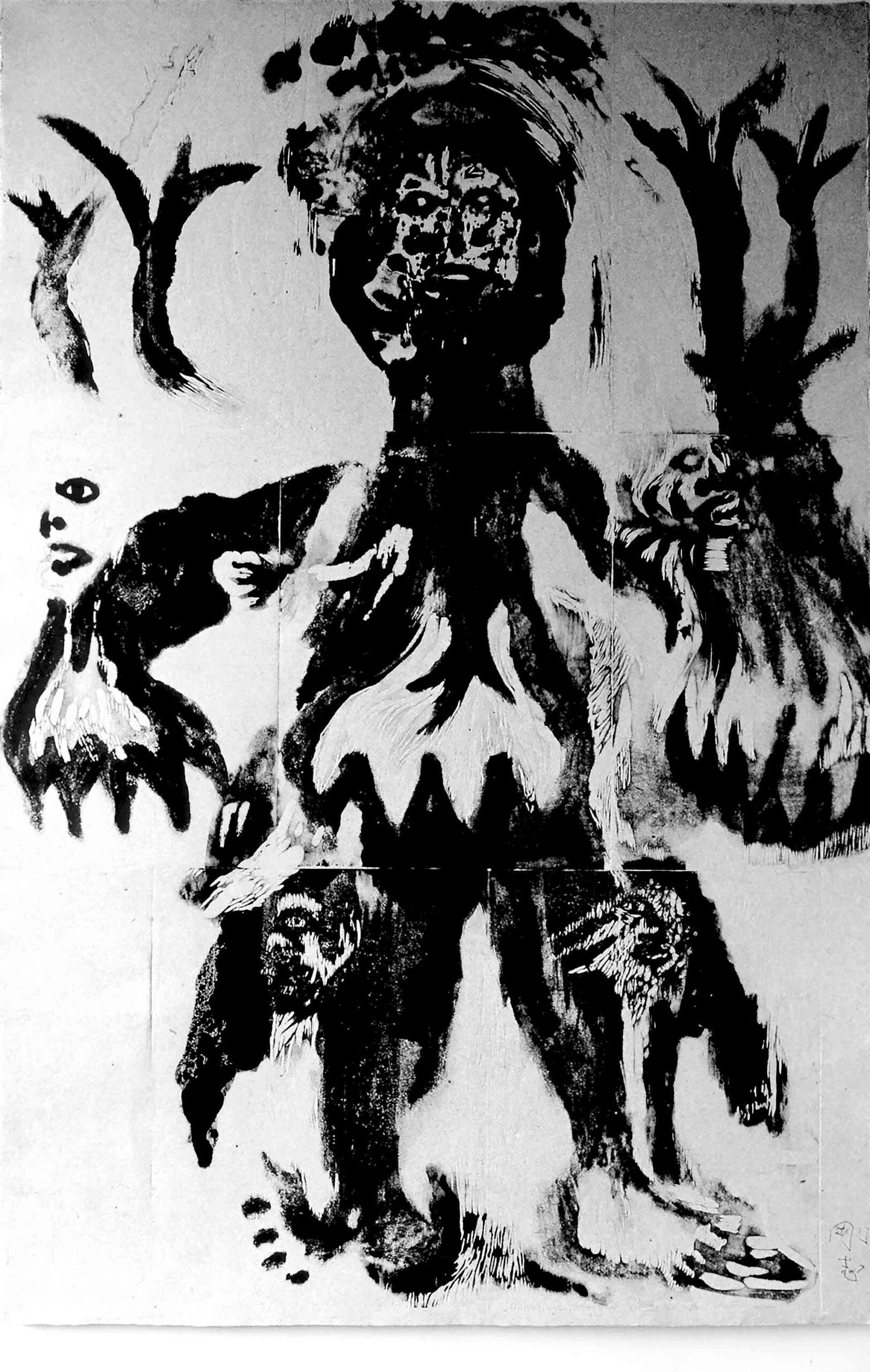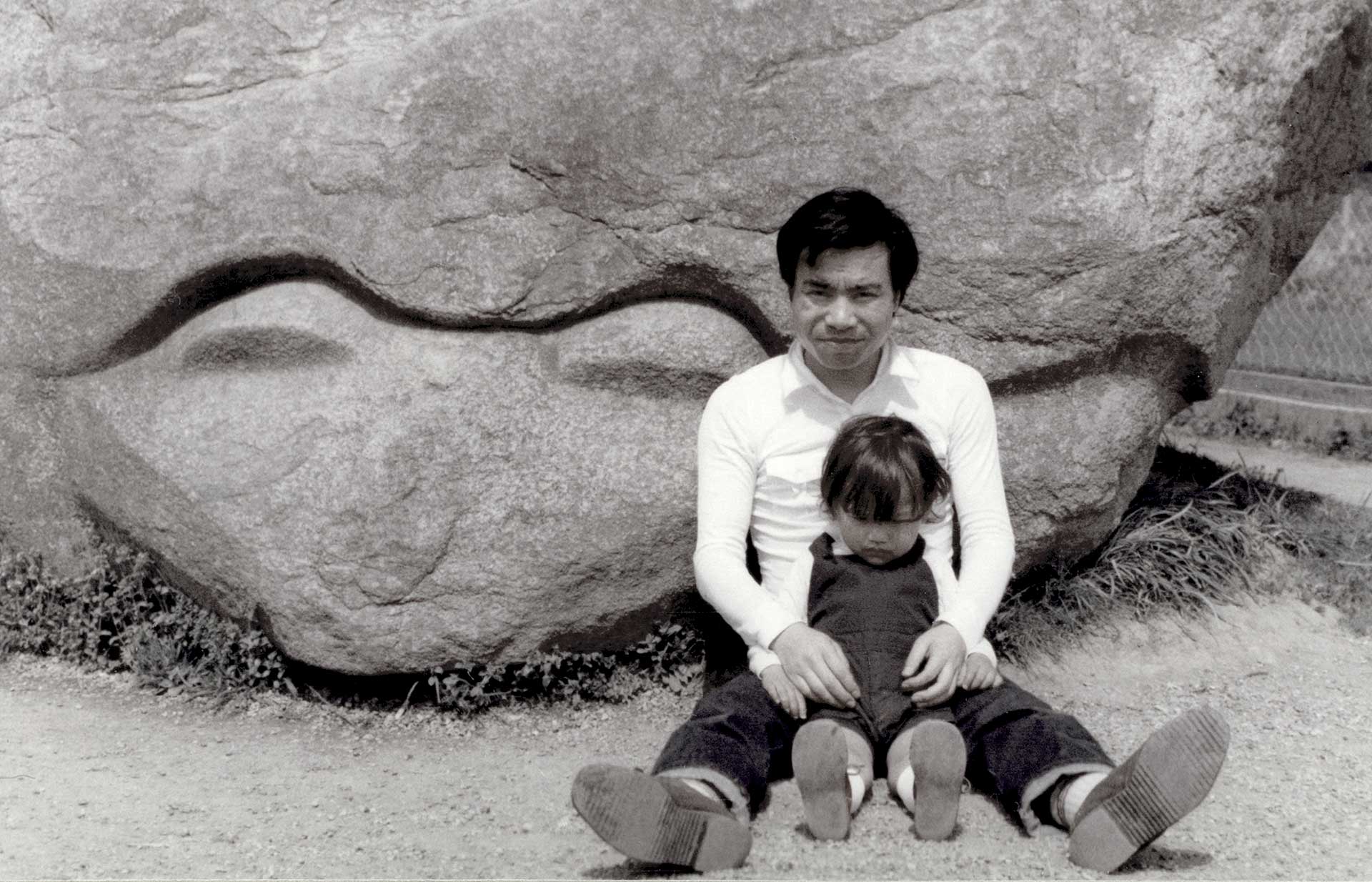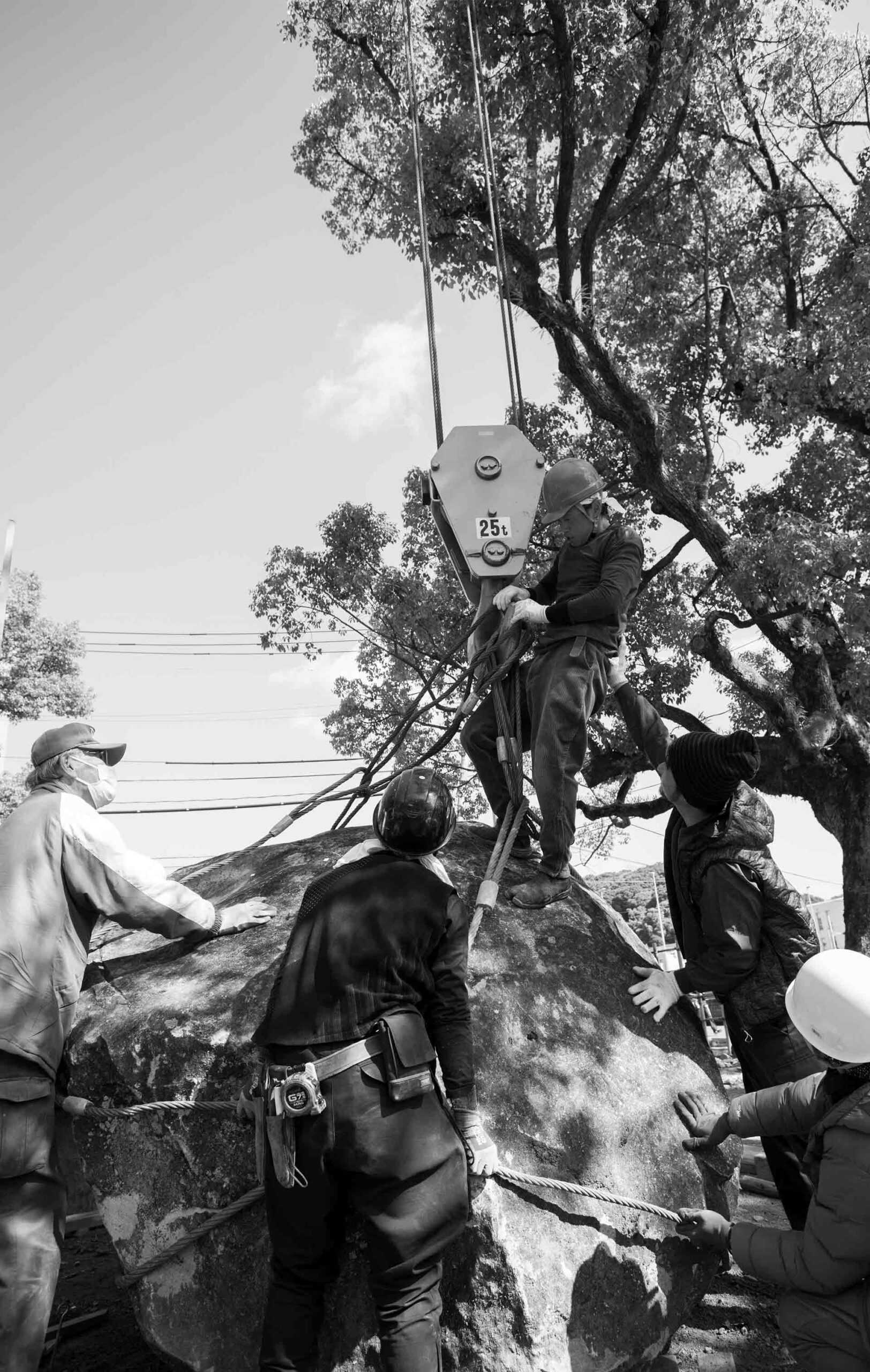長崎 剛志
Takeshi Nagasaki
art gardener
Takeshi Nagasaki (born 1970, Nara, Japan), the founder of N-tree, calls himself an ‘art gardener’. Having studied at Tokyo University of the Arts he spent two years in Spain to study painting and returned to Japan to work with woodcuts and sculpture, while at the same time embarking on a degree in landscape studies. In 2008, relocated to London, moving back to Japan in 2010. Nagasaki created many Asian minimalist landscaping design in various environments, whether its large or small.
N-treeは「根っこまで考えます。」をコンセプトに見えないものを追いつづけています。樹木の細胞、石の結晶、空気の形、人の記憶。 それらは庭をつくる上での大切なソースです。何千年もの先を妄想しつつ、人間の欲望を噛み砕きながら、オリジンな空間を生み出していきます。
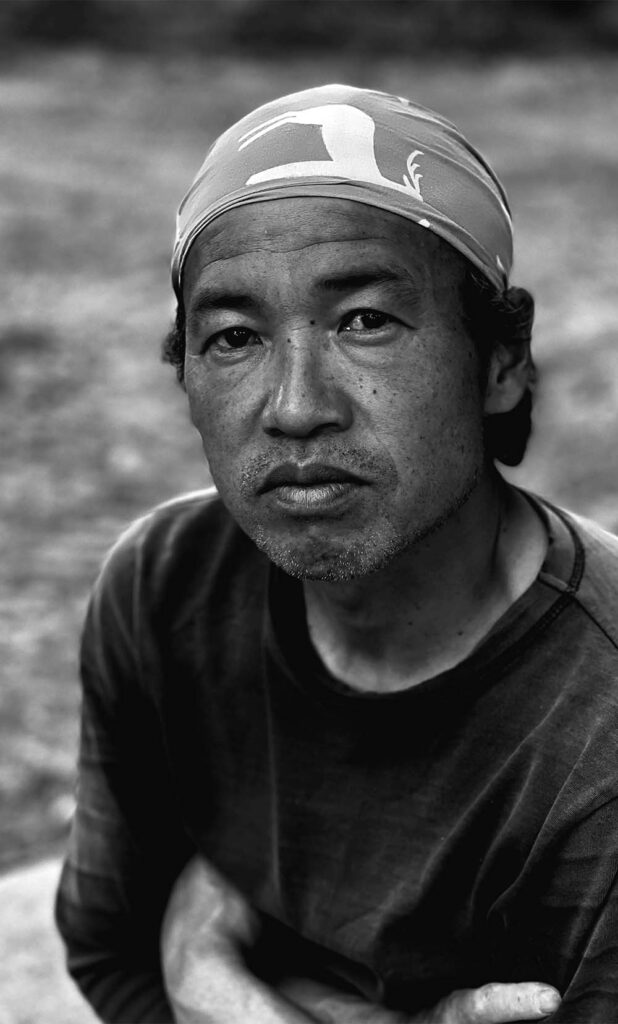
N-tree代表庭園美術家、1970年奈良県生まれ。古都奈良で過ごした幼少期に、建築家の父親に連れられ、身近に神社仏閣に接する。京都東寺にある仏教高校卒業後、東京芸術大学美術学部絵画科に進学。在学中スペインに渡り、マドリッド・コンプルテンセ美術大学で聴講生として油絵を学び、復学後木版画や木彫を始める。1991年から1992年と1994年、ラコタ族(アメリカ・サウスダコタ州)のレザベーションを訪れ、自然・樹木に対する信仰を経験。1995年大学卒業後、独学で作庭を学び、1997年にN-tree (庭ノ心ながさ木)を設立。
その頃から障害者芸術をサポートするエイブルアートムーブメントに参加し、展覧会のキュレーションなどにも関わる。2005年~2007年、石と木によって生みだされる庭の仕事から得た着想をもとに、個展「Seeds(種)」シリーズを発表。2008年〜2010年、イギリス・ロンドンでの作庭が“ART GARDEN”として批評され、海外のプロジェクトに繋がっていく。帰国後、東日本大震災では以前からつながりのあった仲間と「復興支援プロジェクト庭JAPAN」として松島、石巻などで支援活動に取り組んだ。2019年〜2024年、長崎県諫早神社の江戸期に作られた庭園を改修した神仏習合の庭「諫早神社の御神苑」が竣工。現在東京を拠点に世田谷の個人邸、ロンドンの集合住宅の中庭など国内外のプロジェクト進行中。
代表作に「黒土と六角錘の庭」(2008年 神奈川)「Subtracted Garden」(2008年 イギリス) 「Homogenous Garden」(2013年 インド)「818 Garden」(2013年 フィリピン)「舟ノ庭」(2015年 東京)「OGROD POEZJI 計画案」(2016年 ポーランド))「三業の石据」(2017年 埼玉)「自然な庭、不自然な庭。」(2018年 東京)「西治プロジェクトの茶庭」(2024年 千葉)など。主な展覧会として「Seeds 1〜5」(2005年〜2007年 東京)「MEMENTO GARDEN」(2009年 ロンドン)「石と種」展(2016年 東京)など。2024年〜2025年にかけて長崎剛志/N-tree 28周年記念庭園美術展『原始庭苑』を東京、長崎、奈良、スペイン マドリッドで開催予定。
When making art for the garden Nagasaki wants to transpose the essence of deep meditative thought into the beauty of natural form. The act is not to create nature by sculpting but to preserve nature by casting. Using materials such as bamboo, leaf, and stone, and changing their material state into glass and bronze represents a kind of rebirth of the natural elements, giving light and energy back to the garden. These art objects also represent a kind of MEMENTO for the garden that contains profound sense of beauty. The symbolism method, which materialises the invisible realm of the memory is a strong influence in the Japanese garden embodying the spirit of Zen. Nagasaki comments: “Seldom is the art set in my garden insistent. Rather it is of things sweet and ambiguous, permeating the atmosphere and becoming almost invisible. “
Press Release “MEMENTO GARDEN” 2009
